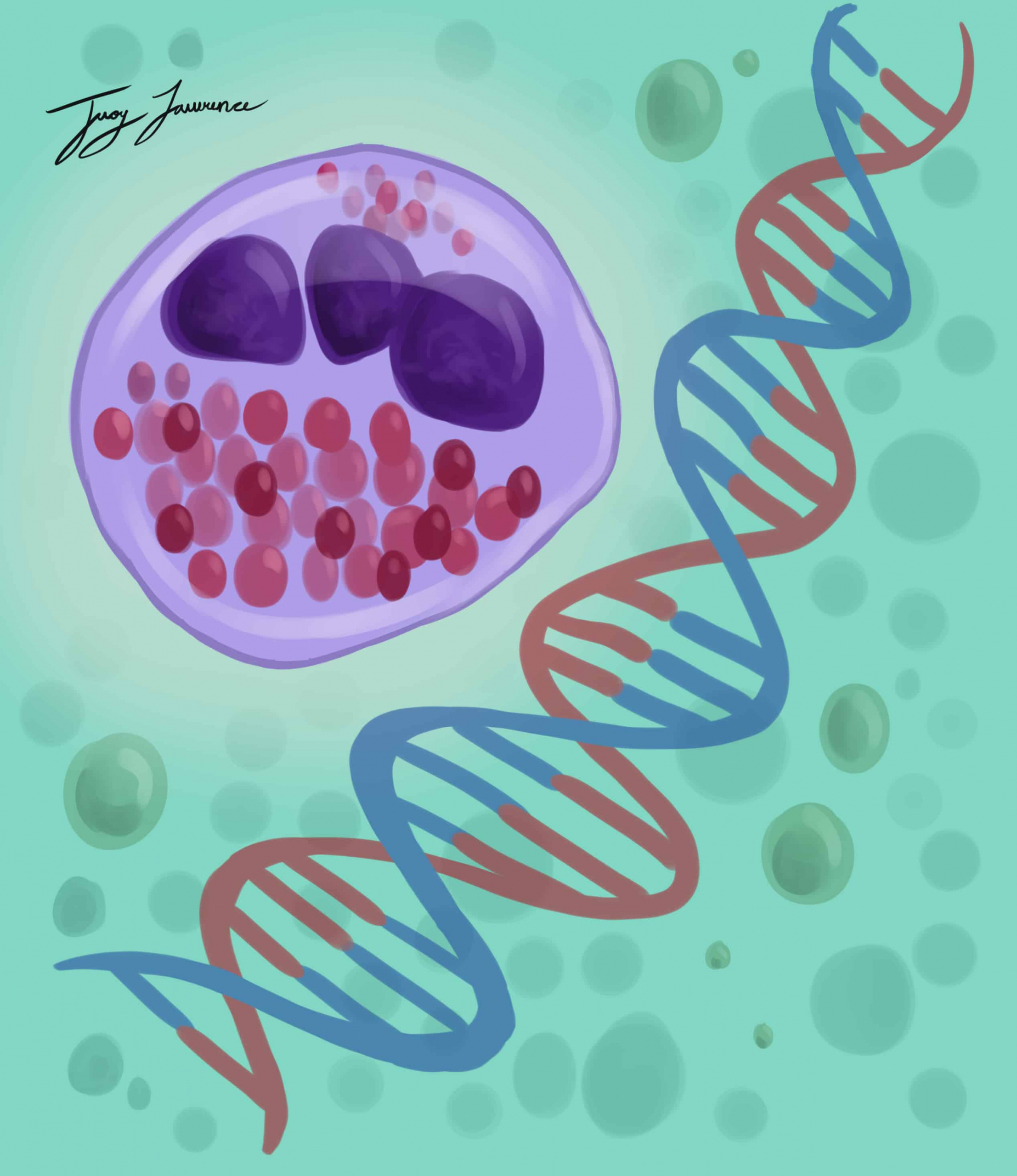Acute myeloid leukemia (AML) is a cancer that begins in the blood-producing regions of the bone marrow.
Mutations in myeloblasts — blood stem cells — occur and prevent the production of mature blood cells, in turn causing uncontrolled proliferation of immature blood cells.
Dysfunctional myeloblasts drive out the functional blood cells to the point where red blood cells can no longer adequately carry oxygen throughout the body, white blood cells can no longer fight infections, and a lack of platelets prevents clotting needed for regular function.
Despite being the most common form of blood cancer among adults, AML is generally rare.
The Leukemia & Lymphoma Society of Canada reported that, in 2014, there were 5,900 diagnoses of leukemia, including AML, out of 22,340 diagnoses of some form of blood cancer.
There aren’t many treatment options for individuals with AML, especially for relapsed patients, whose cancer that is thought to be gone reappears.
In a study published in Blood, a team of researchers from U of T and South Korea developed a proof-of-concept DNA test that could predict an individual’s risk of AML relapse.
The test signifies a leap forward in relapse detection, especially due to the high mortality rate associated with AML recurrence.
According to TaeHyung Kim, lead author of the study and a graduate student in the Zhang Lab at U of T, the most promising treatment for AML is allogeneic hematopoietic cell transplantation, a treatment in which patients receive blood-producing stem cells.
A downside of the treatment is that its success rate varies from patient to patient and it is usually a last resort.
“Consequently, AML patients [who relapse] post-transplant are left with very few treatment options and most patients show high mortality,” Kim wrote in an email to The Varsity.
The goal of the study was to find a way to detect potential relapses of AML, which could open up new treatment options for patients.
AML has a strong genetic component, and several chromosome changes are associated with a higher risk of diagnosis and relapse.
As such, the investigators used next-generation sequencing — a technology that is used to profile changes in the genome — to pinpoint mutations in patients that received hematopoietic cell transplantants at initial diagnosis, pre-transplant, and 21 days post-transplant.
The researchers determined that the majority of the mutations found 21 days after transplantation originated at the time of diagnosis, indicating that they were not removed during the transplantation or became resistant to treatment.
“We observed that close to 60% of patients with measurable residual disease (i.e. mutations) at day 21 post-transplantation relapsed whereas only about 15% of patients without measurable residual disease relapsed,” Kim wrote.
The DNA test is particularly significant for patients who are at high risk for relapse.
Despite promising results, there is still a long road ahead before the DNA test becomes available in clinical settings.
“There are many obstacles to be overcome and improvements to be made until the DNA test can be available in clinic. These include agreements on gene panel to be tested, data interpretation, and lastly, approval from regulatory agency,” Kim added.
Kim hopes that the DNA test will “provide more treatment options for patients with impending relapse and guide selection of therapeutic intervention based on their genetic profile.”


